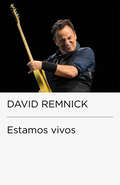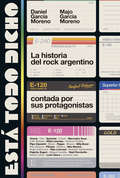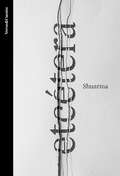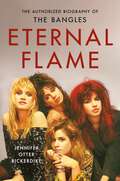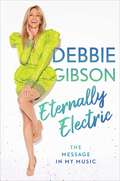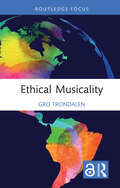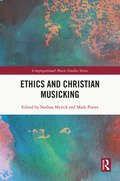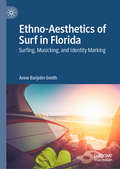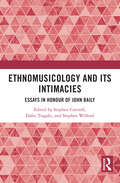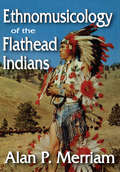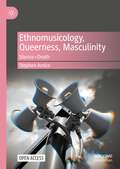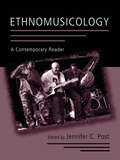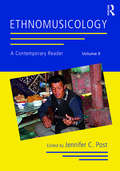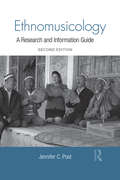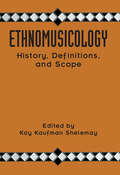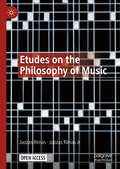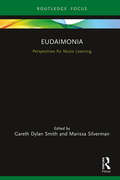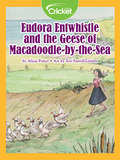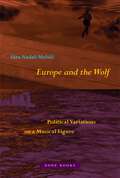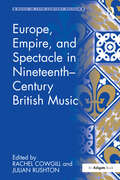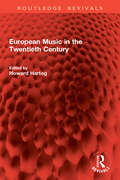- Table View
- List View
Estadio Obras. El templo del Rock: Elogio de la sed
by Gloria GuerreroTodo sobre el estadio de Obras, el lugar donde el rock se conviertía enHistoria: biografías, testimonios, anécdotas y un Musicpass con docetemas en vivo. Gloria Guerrero reconstruye la vida de este Templo con mano de orfebre ycorazón de protagonista, contándola desde adentro. Músicos, empleados,fans, todos colaboran para crear un fresco increíble que retrata lahistoria del rock en la Argentina como nadie lo había logrado hastaahora.Mientras la Comisión Interamericana de Derechos Humanos de la OEAllegaba a la Argentina y se encontraba con la sarcástica campaña «Somosderechos y humanos», la plata dulce y el «deme dos» de Martínez de Hoziban a la par de una inflación galopante y la represión resultabainsostenible, el rock argentino agradecía la inesperada bendición de unnuevo estadio en Núñez. Por fin había un lugar donde reunirse. Y de amiles. Era una cancha de básquet, sí, pero terminó siendo un escenarioque trascendió sus dimensiones físicas: se convirtió en mito.El Estadio Obras se inauguró a fines de 1978 y durante 31 años fue elTemplo, nuestra casa. El rock caminó sus pasillos, y descansó y bebió ensus camarines. De Seru Giran a Soda Stereo, de los Redondos a Spinetta,de Sumo a Divididos, Gieco o Calamaro: el Primer Obras de un artistasignificó, siempre, infinitamente más que un concierto.
Estamos vivos (Colección Endebate #Volumen)
by David RemnickEl fascinante perfil de The Boss, Bruce Springsteen, realizado por David Remnick. Una noche de 1957, un niño llamado Bruce Springsteen se quedó embobado viendo a Elvis Presley en la televisión y le confesó a su madre que así quería ser de mayor. Más de medio siglo más tarde The Boss se ha convertido en una de las leyendas más sólidas del rock, llenando estadios en medio mundo y extendiendo la tradición alternativa del rock como una forma del progresismo político, en sus palabras «una forma de denunciar la distancia entre la retórica y la realidad de Estados Unidos». David Remnick, una leyenda del periodismo estadounidense, acompañó a Springsteen en los ensayos y parte de la gira mundial que emprendió en 2012. Estamos vivos es el fascinante retrato de artista maduro, una obra maestra del periodismo narrativo.
Está todo dicho: La historia del rock argentino contada por sus protagonistas
by Daniel García Moreno Majo García MorenoLa historia oral y coral definitiva del rock argentino: a través del testimonio de sus grandes protagonistas -de Charly, Fito y Spinetta a Cerati, Prodan, Vicentico, Ciro, Pity, Litto Nebbia, Lebón, Javier Martínez y 70 figuras más-, registrado a lo largo de numerosos programas producidos para la televisión de los años 80 por Daniel y Josi García Moreno, toma forma un relato extraordinario. Pocas personas han hecho tanto por documentar el origen y el devenir del rock rioplatense -una historia que abarca ya más de cinco décadas- como los hermanos Dany y Josi García Moreno. A través de numerosos programas televisivos (Rocanrol, La Cueva, Quizás porqué), y documentales como 30 años de rock nacional, fueron creando un registro audiovisual extraordinario. En las voces de decenas de artistas entrevistados para esas producciones y transcriptas en este libro, hoy toma forma una mirada múltiple y diversa sobre el movimiento y las circunstancias que debió atravesar en un mundo de inestabilidad institucional, prejuicios y grosera censura. Una versión posible de qué es el rock argentino. El relato coral de una historia única. «A lo largo de décadas, Dany y Josi García Moreno y Eduardo Berti grabaron a todos, desde los pioneros hasta las nuevas generaciones. Realizaron reportajes memorables de enorme valor histórico y confesiones increíbles. Si alguien se tomara el trabajo de desgrabar, ordenar y dar forma a ese material, sería un libro formidable. Por suerte, Dany y su sobrina Majo (productora y periodista) se animaron a encararlo. Y este es el resultado».Marcelo Fernández Bitar «Hay algo fascinante en este collage: cada una de las voces habla desde un lugar diferente y desde un tiempo distinto. No solamente este libro no se hizo desde hoy, sino que se hizo desde múltiples pasados, lo que depara una suerte de caleidoscopio móvil (...), una banda sonora documental sobre la banda sonora musical de más de una generación. Una apasionante carambola a dos bandas».Eduardo Berti «Cuando apareció el rock en castellano fue un impacto extraordinario: ¿Cómo? ¿Se puede cantar rock en español?».Javier Martínez «Para nosotros naufragar era quedarnos de bohemia hasta las 8 o 9 de la mañana. Aparecía la gente que se iba a trabajar, que recién se levantaba, y nosotros que no nos habíamos acostado siquiera, éramos los sobrevivientes del naufragio».Litto Nebbia «Esa época, los años 70, era peligrosa y linda. Yo escuchaba la sirena y ya me ponía contra la pared porque pensaba que siempre era para mí. (Pero) nosotros éramos imparables, teníamos una misión».David Lebón «Yo creo en las cosas que transforman y creo que, de alguna manera, con mi música he transformado algunas pautas».Spinetta «Creo que los fans de Los Redondos no tienen la más puta idea de qué hablan las letras. Y así y todo, las cantan y se emocionan. Es el poder del arte».Lito Vitale «(En la música de Charly García) escuchás que la alegría no es solo brasilera por primera vez en la historia argentina. Porque parece que el único pulso vital que ha tenido Argentina ha sido el de la guerra, la sangre, las peleas estéticas y la tragedia. Y en Charly eso aparece como una cosa novedosa... la alegría. Es la idea más importante que veo en Charly y posiblemente en el rock».Fito Páez
Etcétera
by ShuarmaEl primer poemario de Shuarma, artista, vocalista de Elefantes y uno de los compositores más populares del panorama pop nacional. «Los textos que componen este libro persiguen la voluntad de alejarte de la realidad, llevarte a otro lugar y sugerirte nuevas visiones, no las mías, sino las que te surjan a ti a través de mis propuestas. Yo enciendo la mecha y tu explotas. Aunque a decir verdad eres tú quien enciende la mecha al decidirte a leer. Siempre comienzas tú». El error es un maestro; crear, la libertad más absoluta. De la magia de lo incompleto, de la sabiduría que se esconde tras la duda y del juego del arte habla este libro. En él, Shuarma -músico, vocalista del célebre grupo Elefantes y artista multidisciplinar- recoge textos que van de lo íntimo a lo lúdico y lo surrealista, que permanecen abiertos a la interpretación, a la espera de que el lector los experimente de una manera única y particular. Una reflexión sobre el poder de la creación y una reivindicación de la misma como acto universal.
Eternal Flame: The Authorized Biography of The Bangles
by Jennifer Otter BickerdikeThe authorized biography of the quintessential &’80s pop band The Bangles, who scored massive hits with &“Manic Monday,&” Walk Like an Egyptian,&” &“Hazy Shade of Winter,&” and more From their first meeting in 1981, the Bangles were ambitious, focused, and intentional; their hard-work and determination resulted in millions of records sold across the globe, before becoming the first all-girl band to have five &“Top 10&” hits. Not long after coming together, they toured the world, released #1 records, and collaborated with the biggest artists of the day. They seemed unstoppable—until tensions within the band, artistic differences, and the pressures of sudden celebrity tore them apart less than a decade later. ETERNAL FLAME is the story of those eight years: of a diverse and vibrant Los Angeles music scene, unfettered work ethics and self-belief, the dawn of MTV, the unpredictable consequences of fame, life as a touring band, and their rapid rise to global domination--then imploding at the height of success. But it&’s also a story of the very real challenges faced by women attempting to follow their artistic dreams in a media and music industry ecosystem which seemed set up for their failure from the start. With unprecedented access to founding members Debbi Peterson, Susanna Hoffs, and Vicki Peterson, ETERNAL FLAME is the first authorized biography of this iconic group, featuring exclusive stories, input, and interviews from the pioneering band members themselves as well as those that knew them best. From playing the club circuit in 1980s' LA to bunking with Sting during a PR trip to the UK to topping the Billboard charts, to interludes with Prince and appearances on the definitive MTV, ETERNAL FLAME traces the band&’s rise to superstardom, taking readers behind-the-scenes and sharing with them never-before-shared anecdotes and personal ephemera. As Debbi herself notes, &“I think it's about time that our true story was told. People only see certain aspects of the Bangles, especially as the media has twisted the past and we have been misrepresented for a long time. Plus, certainly in the eighties, we were women making it in a man's world. I think that needs to be celebrated.&” Dynamic, daring, and deliciously entertaining from start to finish, ETERNAL FLAME is a tribute to one of the greatest pop bands of the 20th century—and a long-overdue corrective that restores The Bangles to their rightful place in music history as feminist trailblazers.
Eternally Electric: The Message in My Music
by Debbie GibsonIn her long-awaited debut, Debbie Gibson reflects on the lessons she learned in her years as a young pop pioneer and on her hard-earned journey to embrace her authentic self, allowing her to lead the healthy, engaged—and electric!—life she does today. Debbie Gibson was just sixteen when she released her multi-platinum debut album Out of the Blue and recorded &“Foolish Beat&” in 1988, making her the youngest person to ever write, produce, and perform a Billboard Hot 100 chart-topper. A child actress who became the original pop princess, Debbie had full creative control over her music and, when that no longer aligned with a transitioning arts scene, she went on to star in Broadway&’s Les Misérables, Beauty and the Beast, and Cabaret, as well as in the London production of Grease. Yet, for all the accolades and achievements, her success came at a high price. Anxiety, depression, financial struggles, illness—Debbie writes candidly about these and other challenges, and how she ultimately redesigned her life to overcome them. This is the story of her not only surviving, but thriving: returning to her musical roots, releasing new albums, going back out on tour, and living the best version of her authentic self to remain…Eternally Electric!
Eternamente
by Pablo Pérez Rueda (Blon)Pablo Pérez, más conocido como «Blon», sorprende ahora con su primer poemario, en el que se constata su amor a la palabra con su talento para moldearla. Mi intención no es cambiar el mundo, es que me dejes construir una pequeña parte del tuyo cuando entres por las puertas de mi vida. Yo te regalo el lápiz y una hoja en blanco para que hagas lo mismo con el mío. Lo que creemos juntos no durará siempre, todo se acaba, pero seguirá en el recuerdo eternamente. Te espero apoyado en el horizonte, acomódate, tenemos una larga charla por delante. Reseña:«Entre luces, destellos y sombras, vas a encontrar al poeta que de tanto estar callado aprendió a gritar; que de tanto temer aprendió a amar.»Miguel Gane
Ethical Musicality (Music and Change: Ecological Perspectives)
by Gro TrondalenEthical Musicality addresses the crossroads between music and ethics, combining philosophical knowledge, theoretical reflection, and practical understanding. When tied together, music and ethics link profoundly, offering real-life perspectives that would otherwise be inaccessible to us. The first part elucidates music and ethics through some influential and selected scholars ranging from Antiquity via modern philosophy to contemporary voices. In the second part, different roles and arenas are illustrated and explored through various music practices in real-life encounters for the musician, the music educator, the music therapist, the musicologist, the ‘lay’ musician, and the music researcher. The third part unfolds an ethical musicality focusing on the body, relationship, time, and space. Following these fundamental existentials, ethical musicality expands our lifeworld, including context, involvement, power, responsibility, sustainability, and hope. Such an ethical musicality meets us with a calling to humanity - offering hope of a ‘good life’.
Ethics and Christian Musicking (Congregational Music Studies Series)
by Mark Porter Nathan MyrickThe relationship between musical activity and ethical significance occupies long traditions of thought and reflection both within Christianity and beyond. From concerns regarding music and the passions in early Christian writings through to moral panics regarding rock music in the 20th century, Christians have often gravitated to the view that music can become morally weighted, building a range of normative practices and prescriptions upon particular modes of ethical judgment. But how should we think about ethics and Christian musical activity in the contemporary world? As studies of Christian musicking have moved to incorporate the experiences, agencies, and relationships of congregations, ethical questions have become implicit in new ways in a range of recent research - how do communities negotiate questions of value in music? How are processes of encounter with a variety of different others negotiated through musical activity? What responsibilities arise within musical communities? This volume seeks to expand this conversation. Divided into four sections, the book covers the relationship of Christian musicking to the body; responsibilities and values; identity and encounter; and notions of the self. The result is a wide-ranging perspective on music as an ethical practice, particularly as it relates to contemporary religious and spiritual communities. This collection is an important milestone at the intersection of ethnomusicology, musicology, religious studies and theology. It will be a vital reference for scholars and practitioners reflecting on the values and practices of worshipping communities in the contemporary world.
Ethno-Aesthetics of Surf in Florida: Surfing, Musicking, and Identity Marking
by Anne Barjolin-SmithEthno-aesthetics of Surf in Florida discusses surf and music as glocal sociocultural constructs. Focusing on Florida's unexplored surfing culture, the book illustrates how musical experience begets representations about the world that highlight ways of acting and being of various sociocultural communities. Based on the conceptualization of ethno-aesthetics, this ethnographic study provides an analysis of the Space Coast surfers community's collaborative effort to build social cohesion through their musicking. This transdisciplinary research in American Studies draws upon various theoretical perspectives from both the humanities and social sciences, including ethnomusicology, social psychology, and sociolinguistics, to propose new ways of exploring the links between surfing and musicking. This monograph looks past the myth of iconic 1960s Californian surf music to show how, as a result of the glocalization of surfing, the musicking of Floridian surfers has allowed them to express their subjectivities and to make sense of their world. This book contributes to the debate on the disputed notions of identity and representations by establishing connections between a local expression of the surf lifestyle and its music. It proposes theoretical models that explain cultural hybridization, appropriation, and belonging in surfing. It also develops concepts and notions, such as surfanization, surf strand, lifestyle crossover, and identity marking, to illustrate how global practices, such as surfing, are endowed with various modes of expression exemplified by the emergence of unique regional subcultures of surfing.
Ethnomusicology and its Intimacies: Essays in Honour of John Baily
by Stephen Cottrell, Dafni Tragaki, and Stephen WilfordEthnomusicology and its Intimacies situates intimacy, a concept that encompasses a wide range of often informal social practices and processes for building closeness and relationality, within the ethnomusicological study of music and sound. These scholarly essays reflect on a range of interactions between individuals and communities that deepen connections and associations, and which may be played out relatively briefly or nurtured over time. Three major sections on Performance, Auto/biographical Strategies, and Film are each prefaced by an interview with a scholar or practitioner with close knowledge of the subject that links the chapters in that section. Often drawing directly on fieldwork experience in a variety of contexts, authors consider how concepts of intimacy can illuminate the ethnographic study of music, addressing questions such as: how can we understand ethnomusicological and ethnographic research and performance as processes of musically mediated intimacy? How are the longstanding relationships we develop with others particularly intimated by and through musicking? How do we understand the musically intimate relationships of others and how do these inflect our own musical intimacies? How does music represent, inscribe, constrain, or provoke social or personal intimacies in particular contexts? The volume will appeal to all scholars with interests in music and how it is used to construct relationships in different contexts around the world.
Ethnomusicology of the Flathead Indians
by Alan MerriamAll people, in no matter what culture, must be able to place their music firmly in the context of the totality of their beliefs, experiences, and activities, for without such ties, music cannot exist. This means that there must be a body of theory connected with any music system - not necessarily a theory of the structure of music sound, although that may be present as well, but rather a theory of what music is, what it does, and how it is coordinated with the total environment, both natural and cultural, in which human beings move.The Flathead Indians of Western Montana (just over 26,000 in number as of the 2000 census) inhabit a reservation consisting of 632,516 acres of land in the Jocko and Flathead Valleys and the Camas Prairie country, which lie roughly between Evaro and Kalispell, Montana. The reservation is bounded on the east by the Mission Range, on the west by the Cabinet National Forest, on the south by the Lolo National Forest, and on the north by an arbitrary line, approximately bisecting Flathead Lake about twenty-four miles south of Kalispell. The area is one of the richest agricultural regions in Montana, and fish and game are abundant. The Flathead are engaged in stocking, timbering, and various agricultural enterprises.For the Flathead, the most important single fact about music and its relationship to the total world is its origin in the supernatural sphere. All true and proper songs, particularly in the past, owe their origin to a variety of contacts experienced by humans with beings which, though a part of this world, are superhuman and the source of both individual and tribal powers and skills. Thus a sharp distinction is drawn by the Flathead between what they call "make-up" and all other songs. Merriam's pioneering work in the relationship of ethnography and musicology remains a primary source in this field in anthropology.
Ethnomusicology, Queerness, Masculinity: Silence=Death
by Stephen AmicoThis open access book explores the disciplinary, disciplined, and recent interdisciplinary sites and productions of ethnomusicology and queerness, arguing that both academic realms are founded upon a destructive masculinity—indissolubly linked to coloniality and epistemic hegemony—and marked by a monologic, ethnocentric silencing of embodied, same-sex desire. Ethnomusicology’s fetishization of masculinizing fieldwork; queerness’s functioning as Anglophone master category; and both domains’ devaluation of sensuality and experience, concomitant with an adherence to provincial, Western conceptions of knowledge production, are revealed as precluding the possibilities for equitable, dialogic pluriversality. Enlisting the sonic as theoretical intervention, the disciplined/disciplining ethno and queer are reimagined in relation to negative emotions and intractable affect, ultimately vanquished, and replaced by explorations of sound, sex/uality, and experiential somaticity within a protean, postdisciplinary space of material/epistemic equity. This uncompromising, long-overdue critique will be of interest to researchers and students from numerous theoretical backgrounds, including music, sound, gender, queer, and postcolonial/decolonial studies.
Ethnomusicology: A Contemporary Reader (Routledge Music Bibliographies Ser.)
by Jennifer C. PostEthnomusicology: A Contemporary Reader is designed to supplement a textbook for an introductory course in ethnomusicology. It offers a cross section of the best new writing in the field from the last 15-20 years. Many instructors supplement textbook readings and listening assignments with scholarly articles that provide more in-depth information on geographic regions and topics and introduce issues that can facilitate class or small group discussion. These sources serve other purposes as well: they exemplify research technique and format and serve as models for the use of academic language, and collectively they can also illustrate the range of ethnographic method and analytical style in the discipline of ethnomusicology. Ethnomusicology: A Contemporary Reader serves as a basic introduction to the best writing in the field for students, professors, and music professionals. It is perfect for both introductory and upper level courses in world music.
Ethnomusicology: A Contemporary Reader, Volume II
by Jennifer C. PostEthnomusicology: A Contemporary Reader, Volume II provides an overview of developments in the study of ethnomusicology in the twenty-first century, offering an introduction to contemporary issues relevant to the field. Nineteen essays, written by an international array of scholars, highlight the relationship between current issues in the discipline and ethnomusicologists’ engagement with issues such as advocacy, poverty and social participation, maintaining intangible cultural heritages, and ecological concerns. It provides a forum for rethinking the discipline’s identity in terms of major themes and issues to which ethnomusicologists have turned their attention since Volume I published in 2005. The collection of essays is organized into six sections: Property and Rights Applied Practice Knowledge and Agency Community and Social Space Embodiment and Cognition Curating Sound Volume II serves as a basic introduction to the best writing in the field for students, professors, and music professionals, perfect for both introductory and upper level courses in world music. Together with the first volume, Ethnomusicology: A Contemporary Reader, Volume II provides a comprehensive survey of current research directions.
Ethnomusicology: A Research and Information Guide (Routledge Music Bibliographies)
by Jennifer PostFirst published in 2011. Routledge is an imprint of Taylor & Francis, an informa company.
Ethnomusicology: History, Definitions, and Scope: A Core Collection of Scholarly Articles
by Kay Kaufman ShelemayFirst Published in 1992. Routledge is an imprint of Taylor & Francis, an informa company.
Etta Extraordinaire
by Roda Ahmed Charnaie GordonEtta Extraordinaire has descriptive copy which is not yet available from the Publisher.
Etudes on the Philosophy of Music
by Juozas Rimas Juozas Rimas Jr.Drawing on the author's four decades of experience as a concert oboist, this open access book studies a number of foundational issues in the philosophy of music, such as musical meaning and expression, musical ontology and the existence of the musical work, the relation between music and language, and the phenomenology of music. The book surveys the development of Western classical music from the Baroque era through to the 20th century, both from the perspective of contemporary Lithuanian philosophers such as Girnius, Maceina, Šliogeris, and Jackūnas, and 20th century European philosophy. In addition to discussing key questions in the philosophy of music, the book also analyses technical musical terms such as articulation, phrasing, and rhythm.
Etudes, Children's Corner, Images Book II: And Other Works for Piano (Dover Classical Piano Music)
by Claude DebussyMany of the most admired of Debussy's piano works, reprinted from authoritative French editions, among them the Etudes (1915), a late work that richly displays the full range and depth of Debussy's genius for the piano, and the magical Children's Corner (1906-8). Also included: Nocturne (1892), Piece pour piano (1903-4), Images, Book II (1907), Hommage a Haydn (1910), The Little Nigar (1909), La plus que lente (1910), Berceuse heroique (1914), Six epigraphes antiques (1914), and Elegie (1915).
Eudaimonia: Perspectives for Music Learning (Routledge New Directions in Music Education Series)
by Gareth Dylan Smith Marissa SilvermanEudaimonia: Perspectives for Music Learning asserts the fertile applications of eudaimonia—an Aristotelian concept of human flourishing intended to explain the nature of a life well lived—for work in music learning and teaching in the 21st century. Drawing insights from within and beyond the field of music education, contributors reflect on what the "good life" means in music, highlighting issues at the core of the human experience and the heart of schooling and other educational settings. This pursuit of personal fulfillment through active engagement is considered in relation to music education as well as broader social, political, spiritual, psychological, and environmental contexts. Especially pertinent in today’s complicated and contradictory world, Eudaimonia: Perspectives for Music Learning is a concise compendium on this oft-overlooked concept, providing musicians with an understanding of an ethically-guided and socially-meaningful music-learning paradigm.
Eudora Entwhistle and the Geese of Macadoodle-by-the-Sea
by Alicia PotterEudora loves her musical geese, but the townfolk of Macadoodle-by-the-Sea find them too noisy and try to get rid of them.
Europe and the Wolf: Political Variations on a Musical Figure
by Sara Nadal-MelsióHow the work of several contemporary artists illuminates and challenges the policing of European borders and identityIn this stunningly original book, Sara Nadal-Melsió explores how the work of several contemporary artists illuminates the current crisis of European universalist values amid the brutal realities of exclusion and policing of borders. The &“wolf&” is the name Baroque musicians gave to the dissonant sound produced in any attempt to temper and harmonize an instrument. Europe and the Wolf brings this musical figure to bear on contemporary aesthetic practices that respond to Europe&’s ongoing social and political contradictions. Throughout, Nadal-Melsió understands Europe as a conceptual problem that often relies on harmonization as an organizing category. The &“wolf&” as an emblem of disharmony, incarnated in the stranger, the immigrant, or the refugee, originates in the Latin proverb &“man is a wolf to man.&” This longstanding phrase evokes the pervasive fear, and even hatred, of what is foreign, unknown, or beyond the borders of a community. The book follows the &“wolf&” in a series of relays between the musical, the visual, and the political, and through innovative readings of artworks—by, among others, Carles Santos, Pere Portabella, Allora&Calzadilla, and Anri Sala. Traversed by the musical, these artworks, as well as Nadal-Melsió&’s writing, present unstable symbolic and material ensembles in an array of variations of political possibilities and impossibilities that evade institutions intolerant of uncertainty and wary of diversity.
Europe, Empire, and Spectacle in Nineteenth-Century British Music (Music In Nineteenth-century Britain Ser.)
by Julian RushtonThis volume illuminates musical connections between Britain and the continent of Europe, and Britain and its Empire. The seldom-recognized vitality of musical theatre and other kinds of spectacle in Britain itself, and also the flourishing concert life of the period, indicates a means of defining tradition and identity within nineteenth-century British musical culture. The objective of the volume has been to add significantly to the growing literature on these topics. It benefits not only from new archival research, but also from fresh musicological approaches and interdisciplinary methods that recognize the integral role of music within a wider culture, including religious, political and social life. The essays are by scholars from the USA, Britain, and Europe, covering a wide range of experience. Topics range from the reception of Bach, Mozart, and Liszt in England, a musical response to Shakespeare, Italian opera in Dublin, exoticism, gender, black musical identities, British musicians in Canada, and uses of music in various theatrical genres and state ceremony, and in articulating the politics of the Union and Empire.
European Music in the Twentieth Century (Routledge Revivals)
by Howard HartogFirst published in 1957, European Music in the Twentieth Century includes chapters by Everett Helm on Bartók, Eric Walter White on Stravinsky, Norman del Mar on Hindemith, and Walter Goehr on Schönberg; followed by various critics on musical development during the twentieth century in Austria, the Scandinavian countries, England, Switzerland, Italy, Germany, Russia, France, Czechoslovakia, Poland, and Greece. The plan has therefore been to take as starting point the four key composers, the pioneers of a revolution—Bartók, Stravinsky, Hindemith and Schönberg—and follow the history of new works and experiments through half a century.All these chapters have been written for this book, none has appeared before. Nothing of this kind has hitherto been attempted, and the result is an impressive summary of achievement in a period of immense vitality and experiment, which can now be viewed in reasonable perspective.

